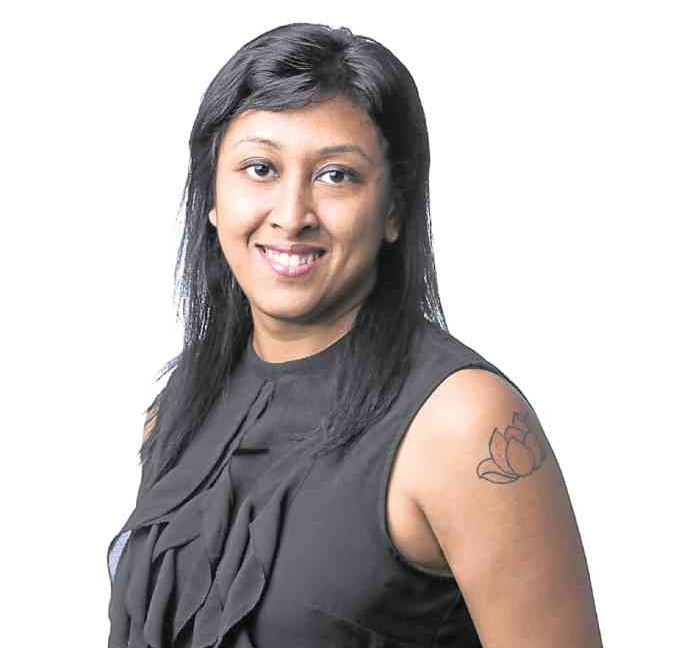To bring the best of entertainment and sports to the market.
That, generally, is the business strategy of social media giant Twitter when it comes to the Philippines, as users in the country are big fans of such events, says Maya Hari, Twitter managing director for Southeast Asia and India.
“If you look at Twitter [users] in the Philippines, they are predominantly millennial, and with strong daily usage. Why? To be part of every entertainment and sports conversation,” she says. “We see that continued pattern that’s unique to the Philippines.”
Hari cites as examples three major local entertainment phenomena which, essentially, “broke” Twitter: the 65th Miss Universe pageant, “Pinoy Big Brother,” and, of course, the AlDub craze involving actors Alden Richards and Maine Mendoza on the “Kalyeserye” segment of popular noontime show “Eat Bulaga.”
“With Pinoy Big Brother, in one week, we see 6.5 million tweets in a week,” says Hari. “Miss Universe, during the live window, generated 34.6 million tweets. It was the biggest global entertainment event on Twitter—bigger than the Oscars. And who can forget AlDub?”
It is because of such strong user engagement—which also translates to an equally strong momentum in advertising—that Hari calls the Philippines their “rising star market” in Asia.
“2016 was quite the transformational year for us. We had three consecutive quarters of accelerated user growth, with 12 percent year-on-year growth,” she says. “If you look at our earnings, we had about $277 million from our international markets, with Asia being the biggest driver of this—and Philippines is really leading the charge for us in terms of user engagement and advertising.”
She adds: “Filipinos love Twitter, and Twitter loves the Philippines.”
To continue this growth, Hari says the company is focusing on innovations around their live video content, especially since last year, during the fourth quarter alone, Twitter had 31 million unique viewers coming in to watch live videos, which is equivalent to around seven million hours of viewership.
“Our growth targets are healthy and aggressive. Given that Philippines is a high-growth market, and that we started the year off with the Miss Universe wherein we had big advertisers, I’d say there’s more to come,” Hari says.
As for the company’s business partners, Hari shares her insights on a few key trends marketers should watch this year:
Social insights: “Does your brand speak data? Although many brands and businesses have adopted social media as part of their marketing strategy, the majority have neglected to leverage real-time social data analytics. In 2017, brands should leverage the full archive of public Twitter data, which has 10 years of conversations around almost any topic you can imagine. By analyzing this rich data set, businesses can uncover key insights to make better decisions. Businesses can also better expect the unexpected and quantify outcomes through data patterns.”
Mobile first: “In 2017, if you’re not catering your content, ads and online experience to a mobile user, then you are missing a massive opportunity. Everything from your business website to e-mail campaigns needs to be mobile-friendly.”
Live video: “Be associated with the trendsetting brands experimenting with live video. This format tends to work best for content that is exclusive, newsworthy, or happening live… or content such as Q&A sessions that require live audience involvement.”
Personalization: “In a world of too much content and not enough time, personalization will be a huge win for brands looking to earn the attention of their consumers in 2017. [This] means segmenting your content to reach different types of audience members based on their preferences, interests, habits, etc.”
Cross-device marketing: “Increased personalization goes hand-in-hand with cross-device marketing. Marketing efforts in 2017 need to address device preferences and cut across desktop, laptop, mobile and TV.”
Social shopping: “We expect social platforms will not be bound just to company-consumer conversation or attracting new prospects; instead, they will provide opportunities to improve conversion rates. Social platforms will work as new conversion channels and offer tools to convert prospects directly into buyers. The challenge for established brands is responding to these new models with digital transformation.”
Direct customer experience: “Anyone who’s spent 30 minutes on hold while trying to reach a company for customer service has thought, ‘there must be a better way.’ We have seen an increasing number of people who shared this sentiment turn to Twitter for a faster, more direct experience.”
Immersive experiences: “Expect content filmed at events to be taken to the next immersive level with 360-degree video thanks to consumer camera products becoming readily available, and platforms like Periscope launching 360 video players. Live 360 video is not just about taking you to places you’ve never been; it’s about connecting you with people and letting you experience something new with them. With these videos, the broadcaster anchors the experience so you can be present with them from whatever environment they’re sharing from.”
